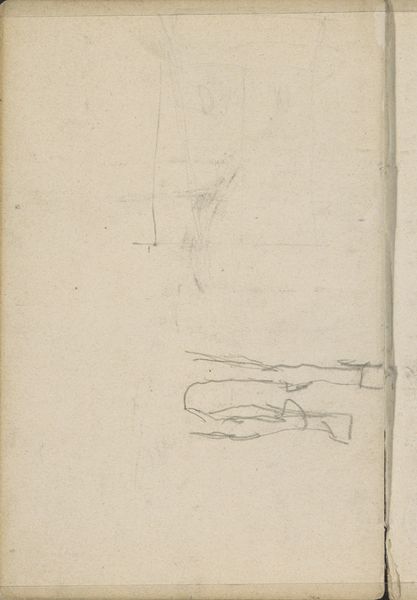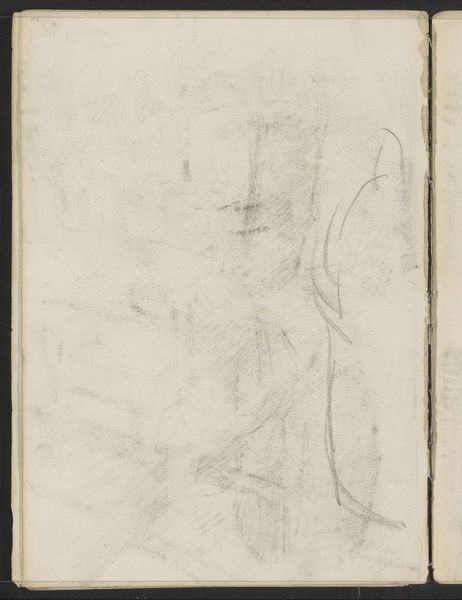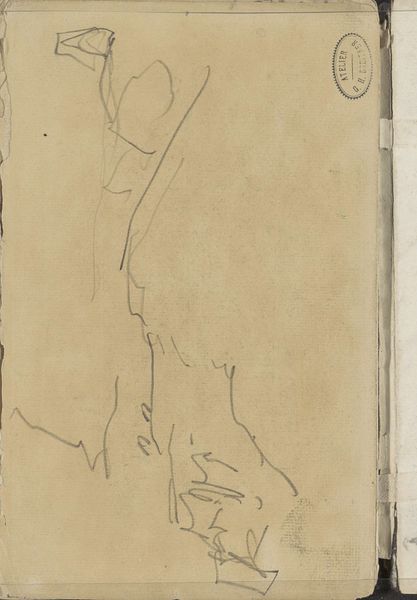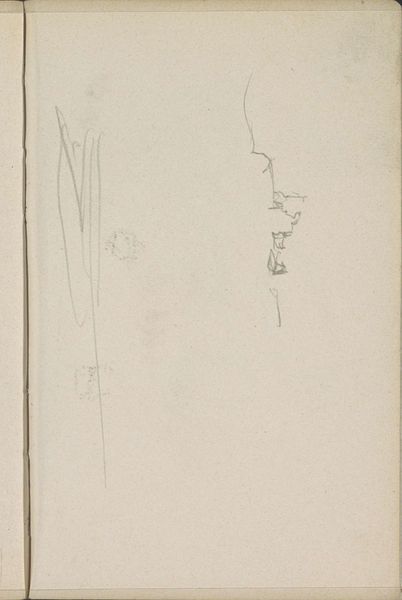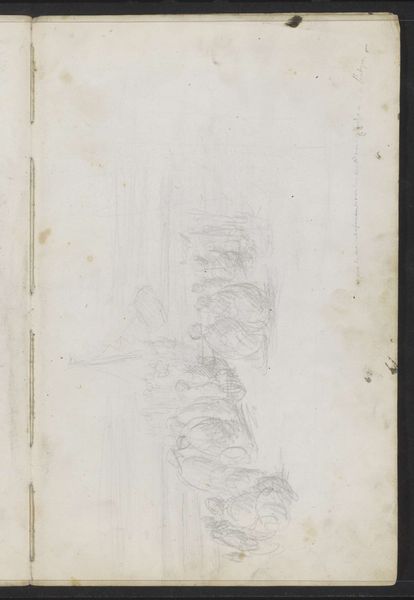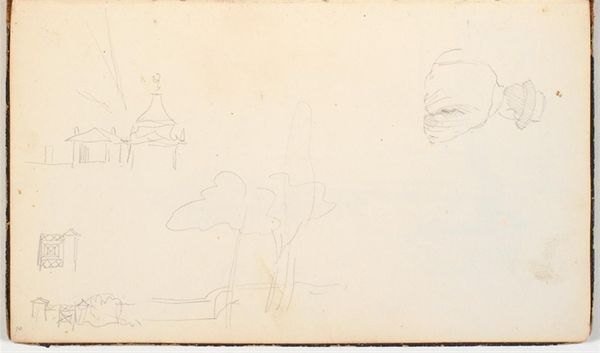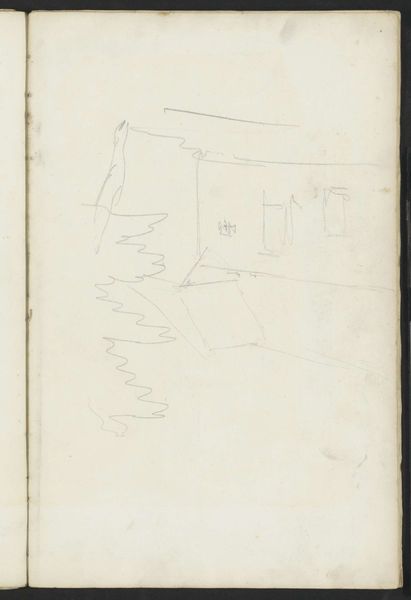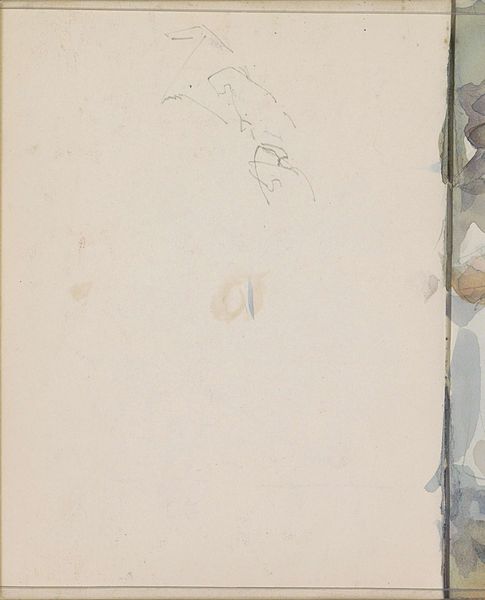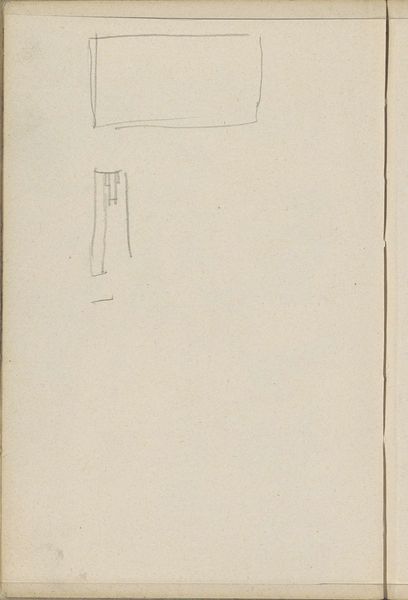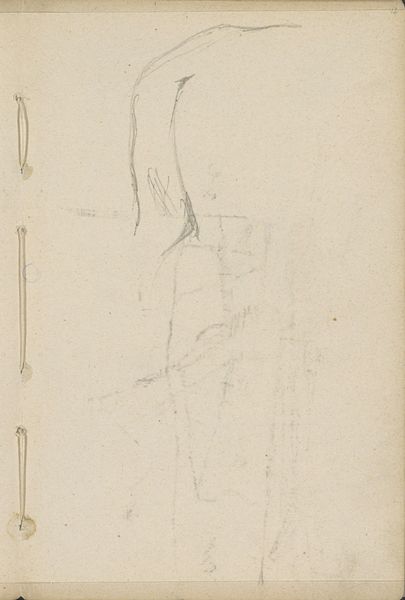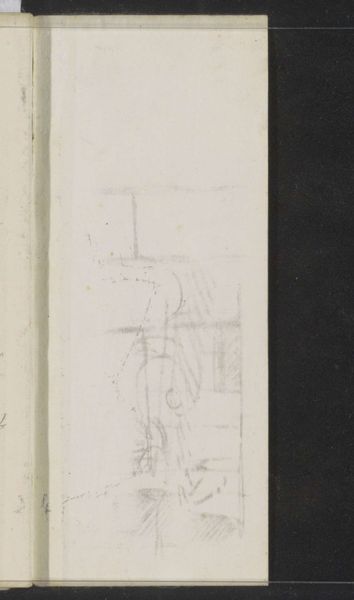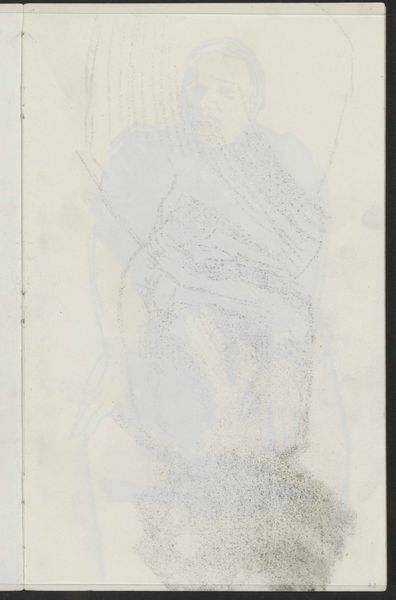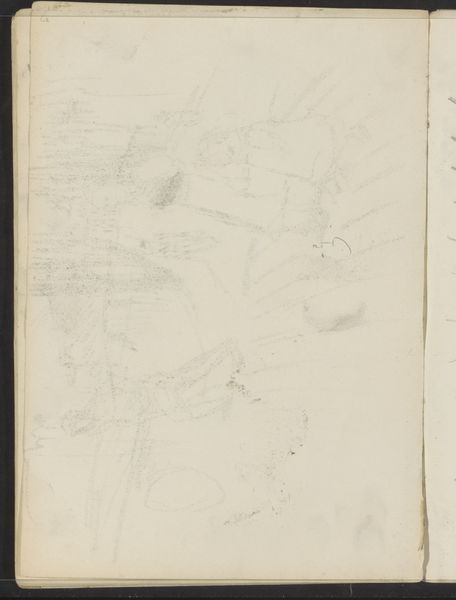
Copyright: Rijks Museum: Open Domain
Curator: Here we have "Abklatsch van de potloodtekening op pagina 36"– a pencil drawing on paper, created sometime between 1887 and 1934 by Isaac Israels. Editor: It's so ephemeral looking, almost a ghost image. The figure seems barely present, like a memory fading away. I'm interested in the materials here... Curator: I think it invites speculation on the figure’s class and identity. Given Israels’ other work, particularly his portrayals of working-class women, can we read this figure as potentially marginalized or representative of a specific social stratum within Dutch society at the turn of the century? The ghostly rendering raises interesting questions about representation and visibility. Editor: Absolutely, the social conditions under which this paper and pencil were available become quite relevant. The material reality shapes who gets depicted. How might the texture of the paper or the grade of the pencil affect the perceived value or permanence of the image? What labour was involved in its production? Curator: Precisely, and the ‘Abklatsch’ or tracing aspect is key. Consider the historical power dynamics inherent in tracing and copying, raising questions of authorship and originality in representing marginalized bodies and who gets to produce these images. Editor: Yes, and thinking about production also opens up to distribution and consumption, which would speak volumes about whose gaze this art served. Was this an artistic exploration with specific markets in mind? Curator: Thinking intersectionally allows us to move beyond individual interpretation and delve into broader dialogues on identity, labor, and societal structures within the art world during the fin de siècle. Editor: Considering Israels' wider body of work—I wonder about the economics and social role fulfilled by quick portraiture sketches made using accessible materials. Curator: It is exciting how analysing material realities helps reveal unseen elements embedded in historical contexts and in creative outputs like these. Editor: Indeed! Analyzing the material leads toward a fresh understanding of the artist's working methods, market influences and overall role in portraying societal power.
Comments
No comments
Be the first to comment and join the conversation on the ultimate creative platform.
